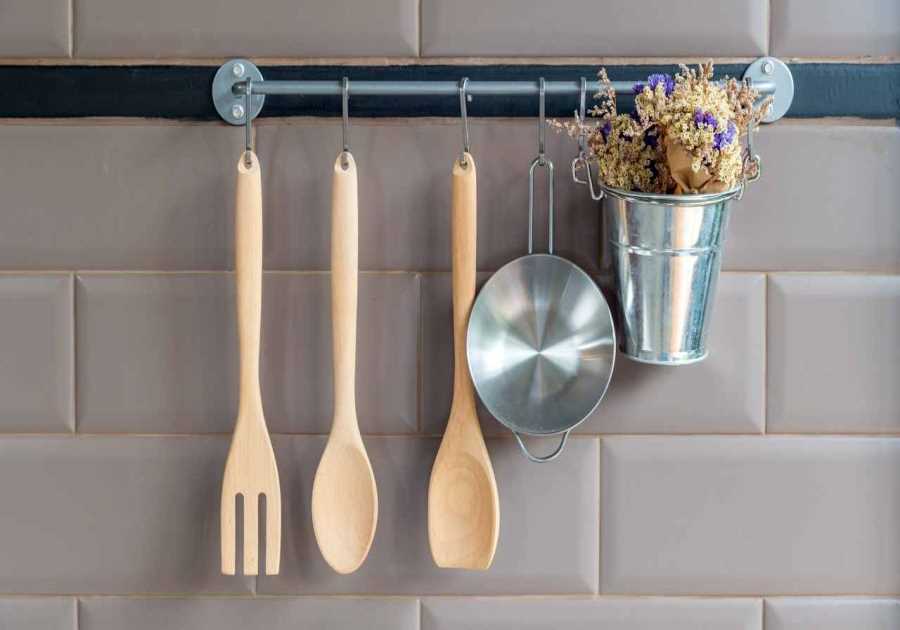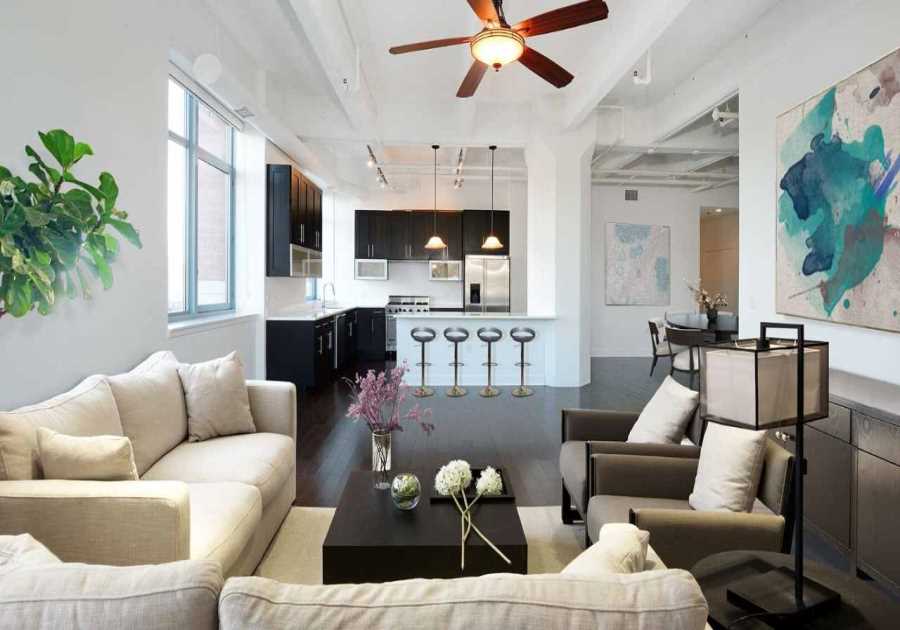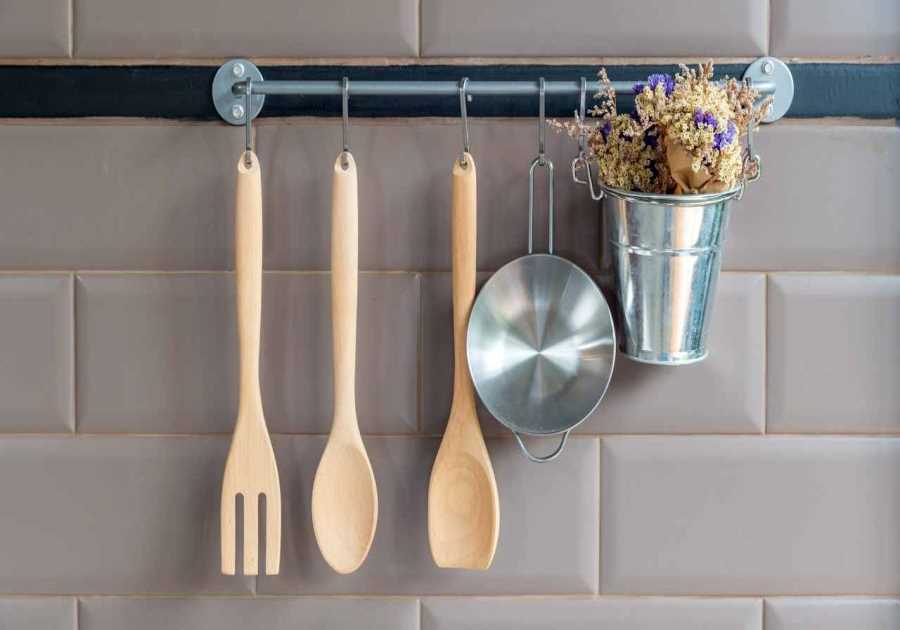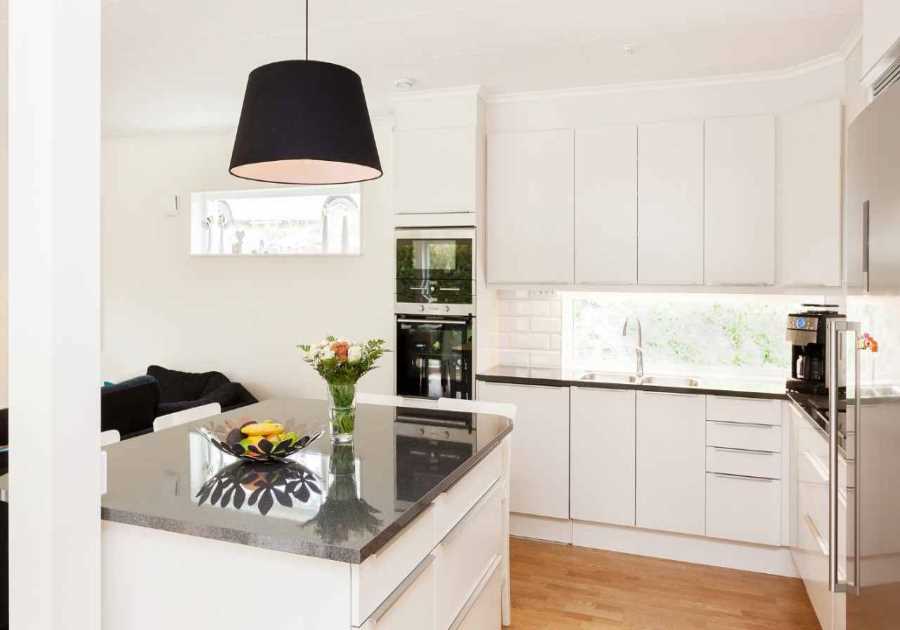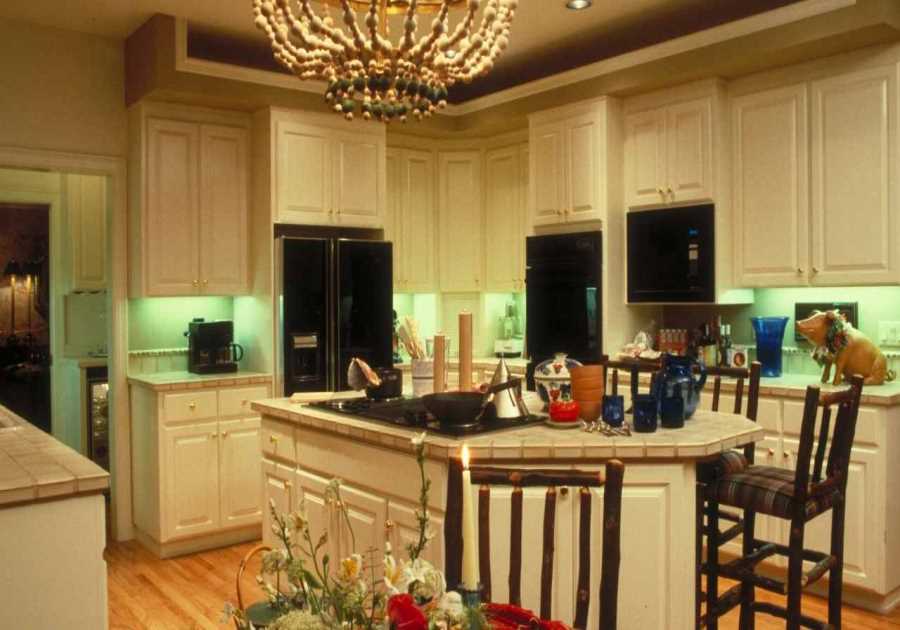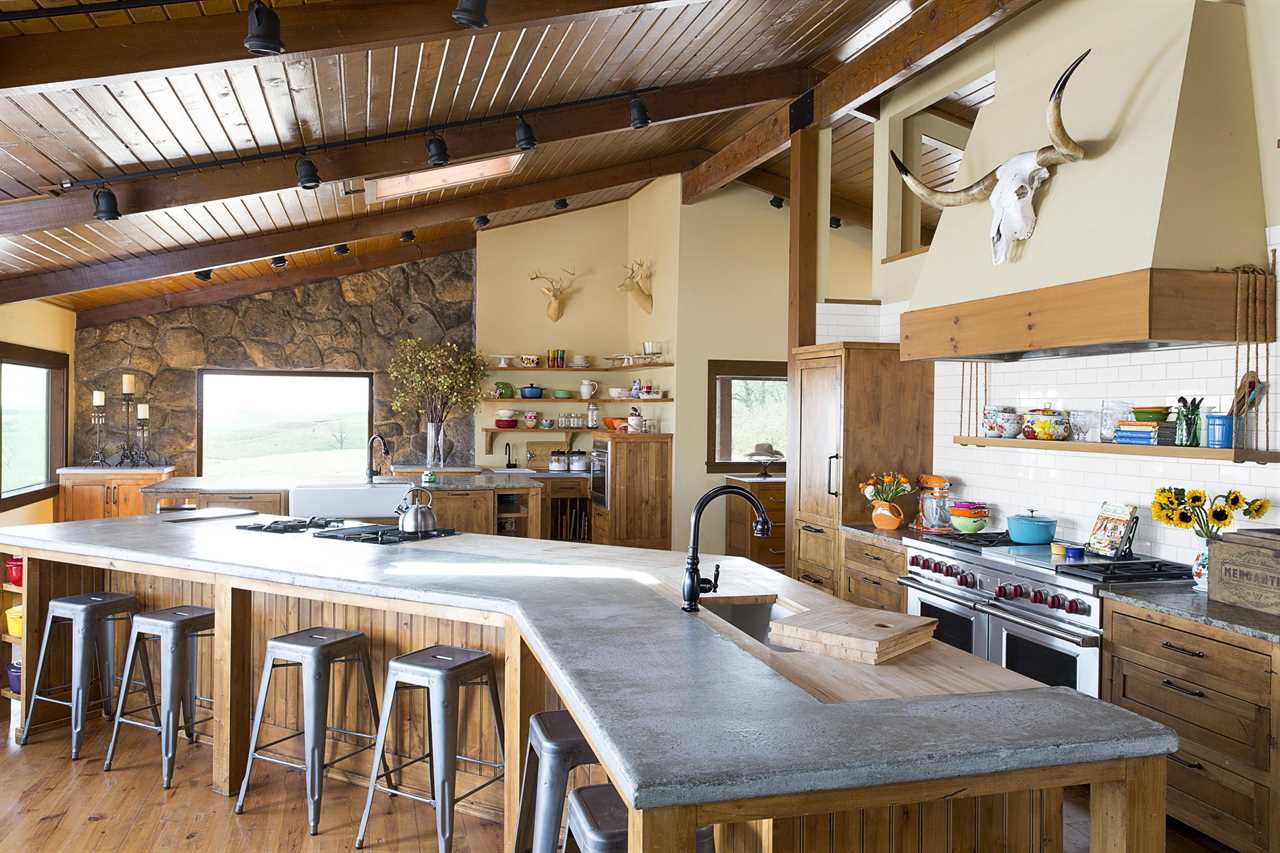
Discover the secret tips and tricks to make your kitchen functional without an island.
My story begins with a challenge. Many of us dream of a beautiful kitchen with all the modern amenities like an island. But, if you are moving into a new home or renovating your existing one, you may want to think twice about adding an island. I’m here to tell you that it’s possible to create a functional and aesthetically pleasing kitchen with clever design details.
For instance, an L-shaped layout can help eliminate kitchen traffic while maintaining plenty of counter space. A peninsula is an extension of the countertop design and is great for kitchens that lack the room for an island. If your kitchen is particularly small, consider a “galley” style kitchen, as these fully use every square inch of available space.
Even if you have room for an island, why not opt for a chef's prep table? This alternative takes up less overall space while providing additional storage and workspace options — perfect for those who often cook and welcome the extra assistance provided by having two workstations side by side.
The L-shaped layout eliminates traffic.
If you want to minimize traffic in your kitchen, you can opt for an L-shaped layout. This design allows for more space to be used for eating and dining. It can also be an excellent choice for open-concept floor plans.
The basic L-shaped layout comprises two walls with countertops on both sides. Alternatively, you can combine this style with a kitchen island. A kitchen island can add extra counter space and storage.
This type of kitchen is perfect for smaller spaces, like apartments or condos. However, if you have a larger house, you may wish to consider a U- or G-shaped design.
Peninsulas are extensions of the kitchen.
Peninsulas are kitchen extensions that create a functional workspace. They are typically attached to a wall and offer extra storage and counter space. These types of kitchens are ideal for smaller kitchens.
While they can be a good solution for larger kitchens, peninsulas can also disrupt the flow of a room. The best design is one that allows multiple users to collaborate.
Peninsulas can also be designed to match their surroundings. For instance, a marble top may enhance an otherwise black-and-white kitchen. You can even make the most of an empty countertop by adding colour and pattern.
Peninsulas are usually smaller than islands and can be a perfect option for small kitchens. Some larger ones can fit a dishwasher.
Galley kitchens make the best use of every square inch of space
The galley kitchen is a unique layout that makes the most of every square inch of space. This type of design features two rows of cabinets facing each other. On one side of the kitchen is a work area, while the other is designed for storage.
This is the perfect kitchen layout for those who live in small homes. It allows you to have everything at a short distance, which is essential for efficient cooking.
In addition, a galley kitchen can have plenty of countertop space. It is best to have a minimum of 36 inches of counter space and, ideally, four to five feet of space between countertops.
Chef's prep tables are becoming an alternative to kitchen islands
There are several options for kitchen islands, but chefs' prep tables are becoming an increasingly popular alternative. Chef's prep tables are designed to function as both a workstation and an entertainment area. They can be built from wood, marble or stainless steel.
In addition to the practical benefits of a chef's prep table, there is also the aesthetic impact. A kitchen island can be a great way to create a more casual dining space and improve storage capacity. It also helps to separate your working space from your living space.
A wooden prep table top is a cozy option for a more formal kitchen. You can use it for kneading dough or chopping fruit and vegetables.
Under cabinet lighting is one of the most common accent lighting types executed in the kitchen.
Under-cabinet lighting can provide an excellent way to illuminate your kitchen. It can eliminate shadows, add colour, and improve the look of your home. Adding effective under-cabinet lighting is one of the simplest DIY projects.
In addition to improving the appearance of your kitchen, under-cabinet lighting can also provide some helpful functional benefits. The right amount of lighting can help you prepare food, treat stains, and more.
Under cabinet lighting comes in a variety of formats. One popular option is light bars. These sleek, rectangular fixtures are designed to be hidden and can navigate tight spaces.
Another popular type of under-cabinet lighting is puck lights. They use LED or halogen bulbs and come in battery-operated models. Many come with remote controls.
Modern kitchen designs can find innovative ways around these guidelines
If you are planning on remodelling your kitchen, consider a modern design. These kitchens feature clean lines and uncluttered surfaces. They also use functional spaciousness.
Often, modern kitchen designs feature solid yet neutral colours. A combination of wood, steel, glass and chrome are common finishes. Stainless steel appliances add a clean, sleek edge to a modern kitchen.
Modern kitchens are also often decorated with artwork. Sculptural pieces and abstract art work well in this style.
Natural light is an important aspect of a modern kitchen. Windows add a welcoming, open feel to the room.
Pendant lighting is an easy way to bring light into your kitchen. Typically, these lights are mounted from the ceiling. Decorative pendants highlight some aspects of your kitchen.
Frequently Asked Questions
What is the most functional layout for a kitchen?
A functional kitchen layout includes an island that has a sink, stove top, microwave, refrigerator, dishwasher and stove. A L-shaped kitchen with an island layout is the best in kitchen design.
How can a kitchen remodel impact your home's worth?
A kitchen remodel can improve your home's market value by as much 20%. A major remodel can cost anywhere from $40,000 to $150,000, so it's essential to consider how much you can afford to spend and whether you'll see a return on your investment.
The key to selling your house quickly is choosing a kitchen design you can appeal to many buyers. Keep it simple and stick to classic styles to keep potential buyers from being turned away.
You are more free to design your own kitchen if you don’t intend on selling your home soon. Consider the purpose of your kitchen, as well as how it will look and feel. Do you entertain often? If so, you might consider a layout with plenty of prep space for guests and ample room for them. Do you love to cook? Then you may want to splurge on higher-end appliances.
No matter what your plans are, a kitchen remodel could be a great way increase your home's worth. You will get the best results if you do your research and choose a trusted contractor.
What kind of kitchen backsplash is in style?
Modern kitchens will benefit from a high-quality backsplash. If you're looking for something traditional, a subway backsplash will work well. If you're looking for something with a rustic feel, then stone or brick backsplash would be a good fit. It's all about personal preference and what suits your kitchen the best.
What colour goes best with a white kitchen?
White kitchens can be decorated in many colors, but walnut looks great with it. The space will be warmened by the natural wood tones, which will make it look more spacious. Both colours will also complement each other well. Black and grey are great choices if you want something subtler. For bolder colours, such as yellow or red, you can make a statement. No matter which route you take, make sure the rest of your decor matches your chosen colour so the space is cohesive.
Statistics
- Followed by cabinet cost, labour, and appliance costs consume 20 percent each of your budget. (hgtv.com)
- In large firms, the commission charged by the GC ranges from 15 to 25 percent of the total job cost. (thespruce.com)
- Experts also recommend setting aside 20 percent of your budget for surprises, including unpleasant demolition discoveries. One is water damage, the electricity that is not up to code, or other budget-spiking gotchas. (hgtv.com)
- According to Burgin, some hinges have this feature built-in, but it's an add-on cost for other models of about $5 retail, adding up to $350 to $500 for an entire kitchen, depending on size. (hgtv.com)
- “We decided to strip and refinish our kitchen cabinets during a heat wave with 90-plus-degree temperatures and 90 percent humidity in a house with no air conditioning. (familyhandyman.com)
External Links
thespruce.com
forbes.com
houzz.com
- The Habitatilist – Project Photos & Reviews – South Orange NJ US
- The 8 Essential Elements of a Craftsman-Kitchen Workbook
homeguide.com
How To
These are the 8 Steps to Kitchen Remodeling For Beginners
This is how to begin a DFY Project for Beginners.
- Remodeling your kitchen involves three steps. First, you need to decide whether you want an entire kitchen renovation or just replacing fixtures and appliances. The second step is to determine what type of kitchen design best suits your lifestyle. Third, decide whether you want to do the job yourself or hire professionals.
- The next step is deciding what kind of kitchen you want to install. Are you looking for a traditional kitchen that includes cabinets, countertops, and all the appliances? Perhaps you prefer modern designs that have minimal storage and sleek lines. Are you interested in installing a large island or adding a breakfast bar? You will also need to hire an experienced contractor to assist you with the installation after you have selected a layout, finish and material.
- Many homeowners feel overwhelmed by all the decisions that must be made before starting a kitchen remodel. There are easy ways for homeowners to get started.
- Deciding if you want to renovate or replace - First, decide if you want to do a kitchen remodel or simply replace certain fixtures and appliances. You will need to consider the costs of deconstruction, new countertops, cabinets, flooring, lighting, and appliances if you plan to completely gut the space.
- Calculate Your Budget – The first thing to do is determine how much you are able to spend on your kitchen remodeling project. This includes everything including labor costs, supplies, and the budget.
- You can choose your layout - Now that you know how much money you are able to spend, you can decide where to place your new kitchen. There are many layouts available, including open concept and peninsula, galley, U-shape or L-shaped, corner, corner, U-shape and U-shape. Each layout has its own pros and cons so it is important to choose the one that suits your needs.
- Select your Materials - After you have chosen the layout for your kitchen, it is time to pick materials. This includes everything from countertops and cabinets to flooring, lighting, and lighting. There are many options. It is important that you research and choose the best material for your requirements.
- Hiring Professionals - Once you have selected your materials, it is time to look for a professional who specializes in kitchen construction. A reliable contractor will make sure that everything runs smoothly, right from design to installation. They'll also provide follow-up services, so you never have to worry about any problems during the process.
- Enjoy! You've made it through the final stages of your kitchen remodel. Enjoy! If you're happy with your new kitchen, it won't be hard to spend hours creating delicious meals. You can still test your kitchen if you're not certain. It will give you a better idea of whether or not your remodel was worth the effort.
.png)
